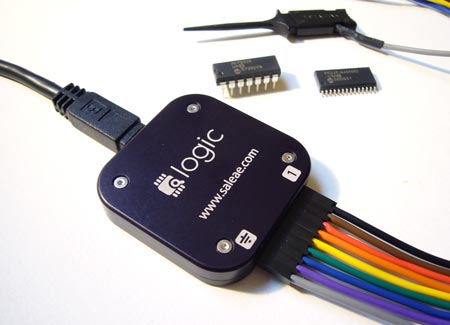
Fundamental Logic is selling a Bus Pirate kit and bare PCB based on our universal serial interface tool. They started with our serial port-based v1a hardware, and modified it to use all through-hole parts. 8pin DIP LP2951ACN/-3.3 switchable voltage regulators replace the surface mount TPS79650/33 that we used. The PIC is pre-programmed with our latest firmware, version 0f, which includes a bootloader for easy firmware updates through the serial port. Documentation includes illustrated assembly instructions.
Speaking of Bus Pirate goodness, we’re busy working on hardware V2. As astute readers may have already noticed, the final version of the Bus Pirate incorporates an FTDI USB->serial chip, and draws its power from the USB port. We also tackled the software-controlled pull-up resistor feature, and reduced the overall part count and cost. Best of all, we’re working to make assembled PCBs available with world-wide shipping. The how-to should be ready in a few weeks.
















